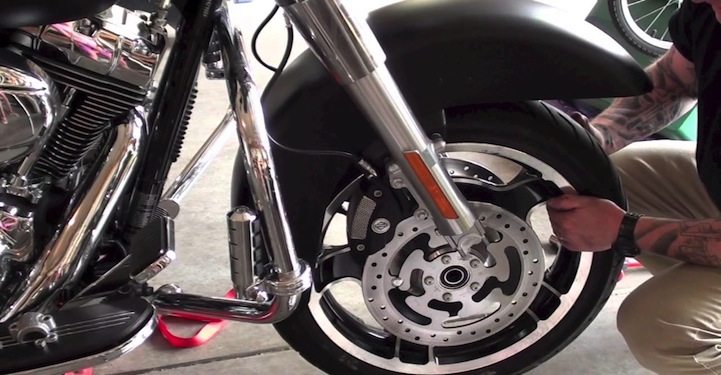Home / Motorcycle How To's & Walkthroughs / How To Remove a Rear Motorcycle Wheel
Posted by: YouMotorcycle in Motorcycle How To's & Walkthroughs May 27, 2021 0
This is how to remove a rear motorcycle wheel and tire on a BMW G650GS. Truthfully, you can apply this simple 5 step procedure to almost every chain drive motorcycle. Doing this simple work yourself will save you a lot of time and money!
Knowing how to remove a rear motorcycle tire yourself is a useful skill for any of the following Do-It-Yourself (DIY) jobs:
You can remove a rear motorcycle wheel and tire yourself in about 5 easy steps:
Before we begin, let’s go over two questions:
Why should I remove my rear motorcycle wheel? In my opinion, knowing how to remove your own rear wheel and tire is an essential motorcycle skill. You can do it with only very basic hand tools (usually just a wrench or two). Doing it yourself can save you a ton of money when it’s time to replace your motorcycle tires.
How much money can I save removing my back tire myself? That depends on the job. If all you need to do is bolt on a new sprocket, or bolt on a new brake rotor, you can save yourself about an hour’s labor from a shop (usually about $100) by doing the work yourself. If you’re needing new tires installed, my local shop charges me about $40 less to bring my tires in on a rim, versus bringing them the whole bike.
You can check out the video above, or follow below as we go into more detail on how to remove your motorcycle’s rear tire.
The first step in removing a motorcycle’s rear tire is to set yourself up for success. I have a BlackWidow table lift, but all you need is a motorcycle jack like the one I use or a motorcycle stand that lifts your bike by some spools.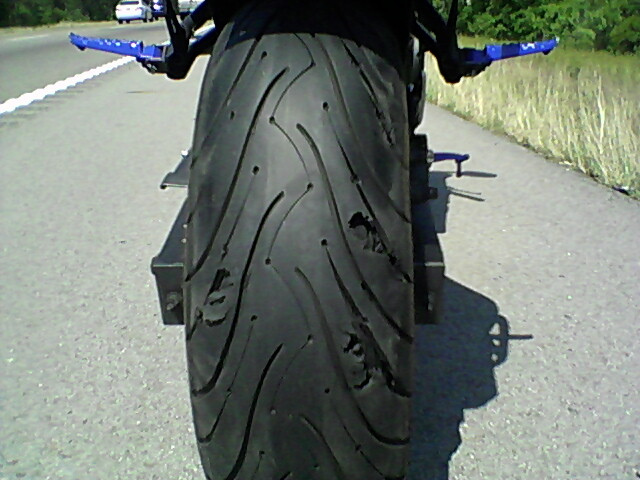
Personally, I prefer the Black Widow Steel Motorcycle Jack because it’s easier to use and feels safer than getting a motorcycle on and off of a rear stand. Some people will even make a stand out of 2×4 bits they have lying around.
However you lift your motorcycle, just make sure it is secure, you’re safe, and the rear wheel is off the ground enough that the rear tire can spin freely.
Assuming you’ve adjusted the chain before, you already know how to adjust your axle nut. One wrench on each side of the rear axle nut, and turn one of them left while holding the other firmly.
If you only have one wrench, get a second one! While you wait for it to arrive, you can lower your motorcycle back onto the ground, put it in gear, and you should be able to loosen the axle nut off that way.
Depending on the bike, there may also be a washer for you to remove, as is the case for our BMW G650GS. The G650GS shown uses a 24mm socket bit on the axle nut and a 19mm socket bit on the axle itself.
If you’ve ever adjusted your motorcycle chain, you should be familiar with loosening and tightening the chain adjusters. This time our goal is to loosen the chain adjusters enough to make A LOT of chain slack.
Remember that loosening the chain adjusters evenly, meaning the same number of turns on each side of your wheel, will help keep your rear wheel’s alignment straight.
When you make enough chain slack, removing the chain off of the rear sprocket will be easy. First, you slide or push the wheel or axle towards the front of the motorcycle. Then you can simply spin the wheel while lifting the motorcycle’s chain and the chain will come off.
Once off, move it to the side and out of the way. You can rest it over the motorcycle’s swingarm.
At this point the only thing holding that rear wheel in place is your axle. Now is a good time to make sure that your jack is in fact supporting the motorcycle, and there’s no weight on your rear wheel. Once you’re sure that you’re safe, just pull the axle out. If it’s stuck in there, use a hammer to tap it out.
Now is a good time to make sure that your jack is in fact supporting the motorcycle, and there’s no weight on your rear wheel. Once you’re sure that you’re safe, just pull the axle out. If it’s stuck in there, use a hammer to tap it out.
In my case, the rear axle had no grease on it whatsoever. I had to use a hammer and a metal rod a little thinner than the axle to bang it out. Always remember to lubricate your motorcycle axle before replacing it.
With the chain off and the axle out, you can just roll your rear motorcycle wheel right out of your motorcycle!
Removing your rear motorcycle is a pretty easy five step job that you can do yourself with only basic tools. Lift the rear, remove the axle nut, loosen the chain adjusters, remove the chain, slide the axle out, and your rear motorcycle tire will roll right out smoothly.
If you have any questions or if you found this helpful, I would love to hear from you.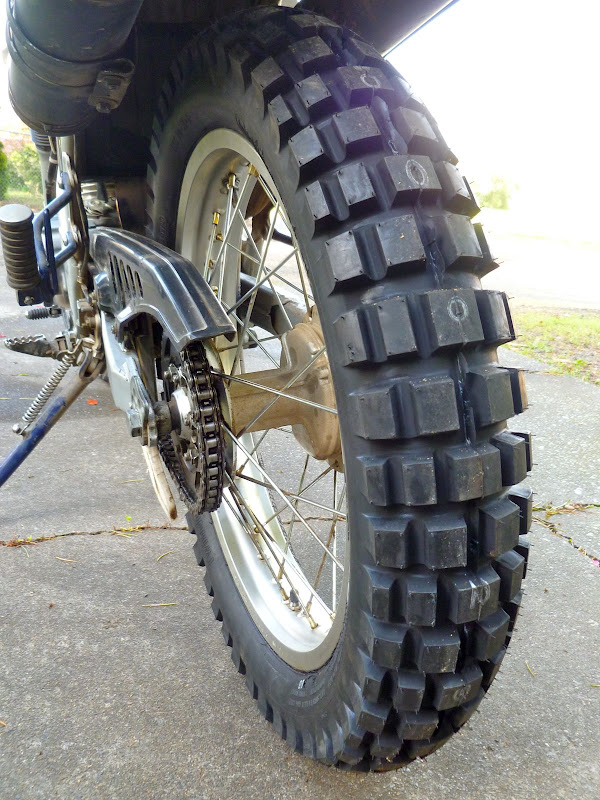 Please leave me a comment and let me know your state or province and if these tips helped you!
Please leave me a comment and let me know your state or province and if these tips helped you!
BMW G650GSMotorcycle MaintenanceTires 2021-05-27
Tagged with: BMW G650GS Motorcycle Maintenance Tires
Previous: Triumph Bonneville Tail Tidy – Before & After
Next: How To Change Oil on a Triumph Bonneville
YouMotorcycle is a lifestyle motorcycle blog to be appreciated by those who see motorcycling as a lifestyle and not simply a hobby, sport, or method of transportation. Most of the posts on the site are written by past and present motorcycle industry staff. We remain fiercely independent, innovative, and unconventional. Our goal is to encourage more people to enjoy the world's greatest outdoor sport by helping new riders get started and inspiring current riders to get out more. We motorcycle, do You?
Most folks know how to remove a wheel from their car or truck, but when it comes to motorcycles, the task seems much more daunting.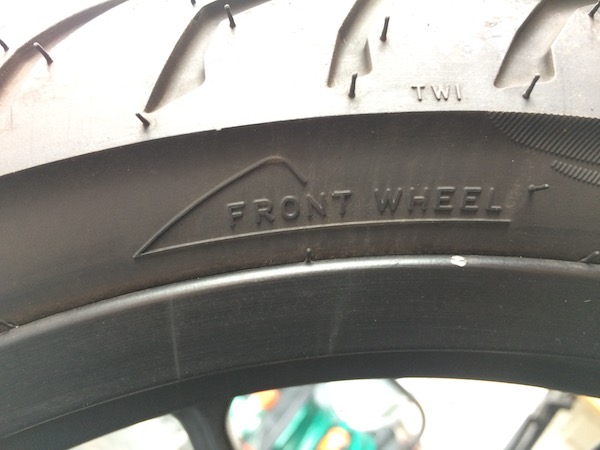 That's largely because the first step is a hard one: You have to lift your motorcycle securely.
That's largely because the first step is a hard one: You have to lift your motorcycle securely.
I’m going to go over some tips for lifting four common styles of motorcycles to help you feel comfortable taking the wheels off your bike on your own.
The most common reason you need to remove your motorcycle's wheels is to change tires. Even if you are not changing the tires yourself, most cycle shops will charge you less if you just bring them your wheels to have tires mounted and balanced instead of bringing in the entire bike. Also, most Cycle Gear stores offer tire mounting and balancing at a discounted rate if you bought the tires from RevZilla, Cycle Gear or J&P Cycles. Other reasons you might have to remove the wheels would be for maintenance or repairs such as replacing wheel bearings and seals, brake rotors, sprockets or pulleys.
First things first. You will need some tools. The best tool is service manual specifically for your make and model. The manual will help you determine what other tools you need, like large-diameter sockets or wrenches for your axles, a few smaller diameter allen and combination wrenches for pinch bolts, chain adjusters and brake calipers, a torque wrench, some waterproof grease, shop rags and a pair of gloves. Most bikes will require an axle tool for removing the front axle.
The manual will help you determine what other tools you need, like large-diameter sockets or wrenches for your axles, a few smaller diameter allen and combination wrenches for pinch bolts, chain adjusters and brake calipers, a torque wrench, some waterproof grease, shop rags and a pair of gloves. Most bikes will require an axle tool for removing the front axle.
Next, you need a way to safely lift the bike. Different styles of bikes call for different methods and devices for raising them off the ground. While you may see large motorcycle lifts at your local motorcycle shop, these are not required to remove your wheels. There are plenty of inexpensive and simple options to raise your bike off the ground enough to get the job done. Let’s go over some of the items available to lift different types of motorcycles.
How To Remove Motorcycle Wheels | Dirt Bikes
We’ll start with the simplest bike to lift. To raise your dirt bike up off the ground, there are two common options. One is a static-style stand, which has no moving parts and has rubber padding on the top for stability and to protect your bike. This style of stand requires you to lift the rear of the bike, placing the weight onto your thigh, then hucking the bike over the stand, placing the center of the frame on the center of the stand. This is a great option for lightweight motocross and enduro bikes, but if you have a big dual-sport bike like a Honda XR650, you may want to consider the upgraded option: a lift-type stand. These stands have a pedal attached to a linkage which allows you to place the stand under the bike and step on the pedal to raise the bike. This is much easier on your back, since you don’t have to bear most of the weight of the bike with your body like you do with a traditional stand
One is a static-style stand, which has no moving parts and has rubber padding on the top for stability and to protect your bike. This style of stand requires you to lift the rear of the bike, placing the weight onto your thigh, then hucking the bike over the stand, placing the center of the frame on the center of the stand. This is a great option for lightweight motocross and enduro bikes, but if you have a big dual-sport bike like a Honda XR650, you may want to consider the upgraded option: a lift-type stand. These stands have a pedal attached to a linkage which allows you to place the stand under the bike and step on the pedal to raise the bike. This is much easier on your back, since you don’t have to bear most of the weight of the bike with your body like you do with a traditional stand
How To Remove Motorcycle Wheels | ADV Bikes
Most adventure-touring motorcycles have center stands or at least mounts for optional ones. Center stands are great for removing the rear wheel from ADV bikes. To raise the front wheel, I generally use a simple scissor-style bike jack under the front of the skid plate. If you don’t have a center stand or one is not available for your bike, you can use a hydraulic motorcycle jack under your skid plate to lift the bike. Just be sure to never lift the bike with its weight on the exhaust system. The exhaust is not built to bear the weight and could be crushed or damaged.
To raise the front wheel, I generally use a simple scissor-style bike jack under the front of the skid plate. If you don’t have a center stand or one is not available for your bike, you can use a hydraulic motorcycle jack under your skid plate to lift the bike. Just be sure to never lift the bike with its weight on the exhaust system. The exhaust is not built to bear the weight and could be crushed or damaged.
How To Remove Motorcycle Wheels | Sport Bikes
Most sport bikes have provisions for swingarm spools in the rear. Spools offer protection for your rear axle and swingarm if you lowside your bike, but they are also designed to allow you to raise the bike off the ground with a swingarm spool stand. For raising the front of your bike, a fork lift stand raises the bike by lifting from the bottom of the fork legs. Another slick option is a head lift stand, which uses a pin that fits inside the bottom of the steering stem to raise the bike. The advantage of a head lift stand is that it allows you to remove your fork legs for service and tuning, in addition to allowing removal of your front wheel.
How To Remove Motorcycle Wheels | Cruisers
Cruisers are typically low and heavy, so raising them off the ground can surely seem intimidating. Thankfully, they usually have wide, flat frames under their engines which make a perfect platform for lifting them with a hydraulic lift. Hydraulic motorcycle jacks are widely available and typically have provisions for tie downs to secure the bike to them for stability.
Once you've raised the motorcycle, the process for removing your wheels will be similar from one motorcycle to another but not exactly the same. That's why I highly recommend referring to your service manual for clear direction on how to perform the task on your specific machine. It will tell you which items must be removed before taking the wheels off. You may need to remove brake calipers or possibly a fender, and you will also be dealing with a drive system on the rear wheel. The manual will also show you how to adjust your chain or drive belt as well as considerations for shaft drive maintenance.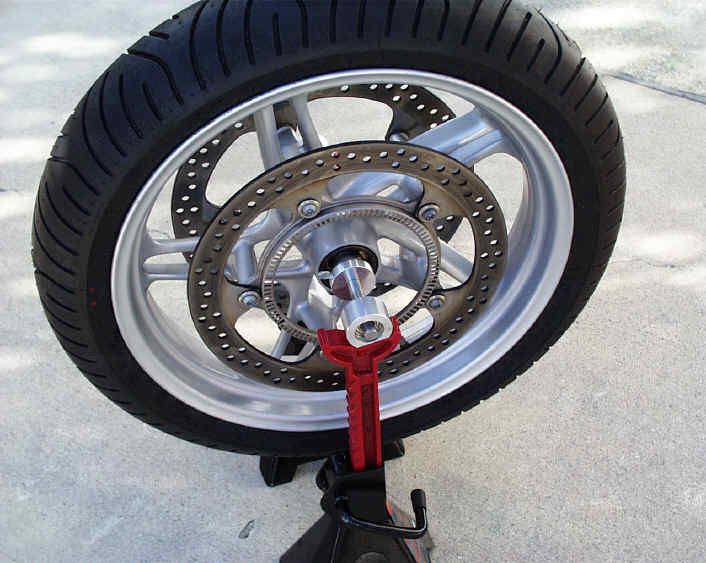
Now that you know the different ways you can lift your motorcycle, removing and reinstalling your wheels should be a piece of cake.
Home » Tips
Author Anatolij Reading 2 min. Posted by
Mototechnics "Voskhod" is in stable demand due to its increased resistance to wear and grateful response to repair work. For example, if you need to remove the rear wheel of this motorcycle, it will take a minimum of time and only a few hand tools (hammer, wrench 22 for the axle nut, a metal bar with a diameter of 15 mm, and a bar with which you can stop turning the axle). Additional motorcycle parts will be needed if something has already failed. True, they can always be purchased at a motorcycle store. For example, a good range of spare parts online is offered by MotoImport https://motoimport.net.
For example, a good range of spare parts online is offered by MotoImport https://motoimport.net.
The removal process is very simple:
remove the axle nut with a wrench;
knock out the axle;
remove the aluminum spacer;
pull the wheel in the direction of the removed hub.
Install in reverse order.
Turning to a specialized motorcycle store, you get many advantages. Firstly, such companies, as a rule, employ certified specialists who really understand motorcycle technology. So if you need spare parts to replace your rear wheel, they will help you with advice in the process of choosing them. In addition, you can get competent advice and repair. Finally, motorcycle parts from a reliable online supplier:
may be original or compatible, but you will know exactly what you are getting;
have manufacturer's warranties;
are supplied in original packaging;
fully comply with the specifications stated on the website;
are cheaper than parts offered offline.
A striking example is MotoImport, because this company offers a wide range of spare parts for motor vehicles for various purposes.
If you need motorcycle parts for Voskhod, we recommend choosing original components. Original spare parts are always the preferred option, especially when it comes to domestic motorcycles, the cost of parts for which remains as affordable as possible. You can find spare parts for the Voskhod motorcycle in almost any motorcycle store, both offline and online. The second option is more convenient, because you can arrange targeted delivery and not waste your personal time visiting the market or store premises.
Interesting thematic video:
There is not always a way to call a tow truck, and driving on a flat tire, “chewing” the rubber and killing the rim is at least uncomfortable.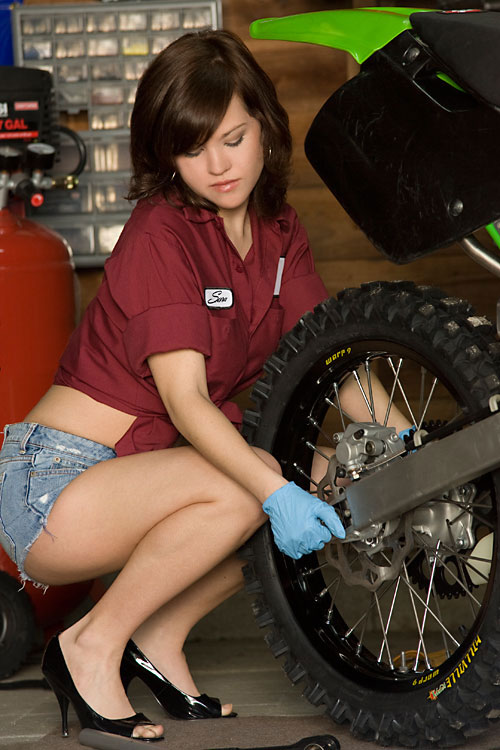
The very first replacement of rubber on a motorcycle or scooter gives reason to think - what is better in terms of quick repairs: tubeless ones that do not require wheel disassembly to eliminate a puncture, but leave the rider helpless if, along with damage, it “led” and flattened the edge of the disc? Or chambers - allowing sealing almost ring breaks (if only there were enough patches), but requiring the removal of rubber from the rim for this? The unequivocal answer is no. Few classics, straights or tourers today remain "loyal" to tube rubber models: tubeless tires are lighter, softer, warm up and cool down faster thanks to simplified heat transfer. In sports, more precisely - enduro and motocross, chamber - on the contrary, prevail: only spoked wheels can "play", withstanding strong alternating loads during landings and impacts.
The nuance is that a tire with a chamber can be put on any spoked or cast disc, and a tubeless one can only be placed on a cast one, because only it can ensure tightness. Tube – can be installed in a tubeless tire as an emergency measure. In case of major damage to the sidewall, cracks or curvature of the edges of the rim, this will make it possible, after pumping up the wheel, to reach the nearest tire service (and there already - straightening, balancing and other maintenance according to the rules). True, for such a focus, it is advisable to take a camera with a face value one less than the diameter of the disk, otherwise it will create folds inside that will rub for a couple of hundred kilometers. The resource of such a “treatment” is large - until the next puncture, like a new one.
Tube – can be installed in a tubeless tire as an emergency measure. In case of major damage to the sidewall, cracks or curvature of the edges of the rim, this will make it possible, after pumping up the wheel, to reach the nearest tire service (and there already - straightening, balancing and other maintenance according to the rules). True, for such a focus, it is advisable to take a camera with a face value one less than the diameter of the disk, otherwise it will create folds inside that will rub for a couple of hundred kilometers. The resource of such a “treatment” is large - until the next puncture, like a new one.
It depends on the magnitude of the damage whether it will be possible to eliminate it on your own, or whether you will have to “surrender” to the motorized tow truck. In tubeless - holes up to 5–6 mm are patched, in chambers - as much as there is enough glue and patches, the main thing is the condition of the tire. To determine the extent of the disaster - find a place where you can safely stop without violating traffic rules (where it is prohibited - you will have to sacrifice tires and drive on).
To determine the extent of the disaster - find a place where you can safely stop without violating traffic rules (where it is prohibited - you will have to sacrifice tires and drive on).
If the wheel deflates slowly, and the object that pierced it is still inside, you can try to carefully drive to the tire shop. A completely deflated "pancake" will have to be resuscitated on the spot, or - remove the wheel and take it to the service.
To find a hole in a tubeless tire, if it is very thin and not immediately visible, the wheel must be pumped up, slowly pouring water - bubbles will go. In place, tubeless tubes can be “harnessed”, or filled with sealant inside, without removing from the motorcycle.
With the second type of tires - more difficult. A torn balloon must be removed from the tire to detect a defect and seal. In a good way, the wheel must be removed from the motorcycle and disassembled on a clean, flat, hard base. Suppose such a “patch” can be provided even off-road, but how to remove the wheel on a motorcycle if it does not have a central stand? And shooting is not required.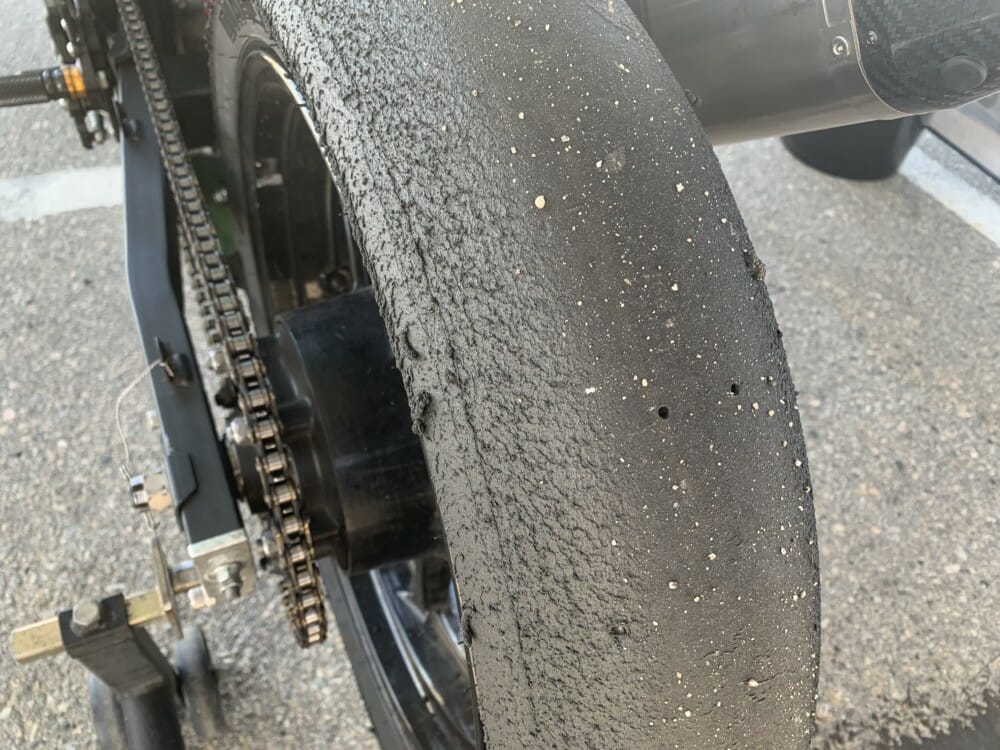 The motor must be carefully laid on its side, after making sure that the faucet is closed, gasoline does not flow out through the tank cap (antifreeze does not flow from the tank if the motor is “dropsy”), and removing the plastic or wardrobe trunk with fragile contents (if any).
The motor must be carefully laid on its side, after making sure that the faucet is closed, gasoline does not flow out through the tank cap (antifreeze does not flow from the tank if the motor is “dropsy”), and removing the plastic or wardrobe trunk with fragile contents (if any).
You will have to unscrew the wheel from the motorcycle only if you need to replace the tire, or it is decided to patch the tubeless tube with a “fungus”. In the absence of a central stand, this will also have to be done on a lying bike, or - make this stand from improvised materials (bricks, stump, car jack), placing them under the crankcase protection from below, the central tube of the frame, the duplex jumper (but not under the plastic, itself engine crankcase or attachments!), under both footrests - if they are not folding, or - under the pendulum. Before removing the rear wheel on a motorcycle, the front fork must be loaded with something, or an even higher lining is made.
In a motorcycle tire fitting shop, tubeless tubes are repaired by cold vulcanization. They are removed, disassembled, the puncture site is cleaned from the inside, degreased, lubricated with glue and a calibrated “fungus” patch is inserted into the hole from the inside. The fungus itself is a thin plate of rubber with a “leg” tube in the center. The leg - by the guide wire is dragged through the hole of the damage, and the "hat" seals it.
They are removed, disassembled, the puncture site is cleaned from the inside, degreased, lubricated with glue and a calibrated “fungus” patch is inserted into the hole from the inside. The fungus itself is a thin plate of rubber with a “leg” tube in the center. The leg - by the guide wire is dragged through the hole of the damage, and the "hat" seals it.
After half an hour - you can put the tire back. The reliability of such a repair is high, the patch does not cause a significant imbalance, the service life of a sealed tire does not decrease.
This method is also applicable on the road, the main thing is to have the necessary equipment and materials with you:
The fungus repair procedure does not require much experience. The main thing is to keep it clean, fully clean the place where the patch fits, let the glue dry slightly to a dull finish and press (roll) the surface of the fungus with high quality, expelling all the air between the layers. If necessary, you can degrease the place before gluing with gasoline, but without the rest of the above, it will not be possible to fully carry out repairs.
The main thing is to keep it clean, fully clean the place where the patch fits, let the glue dry slightly to a dull finish and press (roll) the surface of the fungus with high quality, expelling all the air between the layers. If necessary, you can degrease the place before gluing with gasoline, but without the rest of the above, it will not be possible to fully carry out repairs.
The compressor is sometimes replaced by a small cylinder of compressed air or carbon dioxide. Unlike a mechanical pump, it will immediately create a “throw” of pressure, pressing the tire beads against the rim flanges (in emergency cases, even a fire extinguisher was used to pump flat tubeless wheels). When connecting the compressor, start the bike's engine before you start inflating the tire - let it idle. Otherwise, the motor can "land" the battery, and you will not start.
Manometer - needed for control. It is undesirable to pump over the repaired tire. It is recommended to "inflate" 0.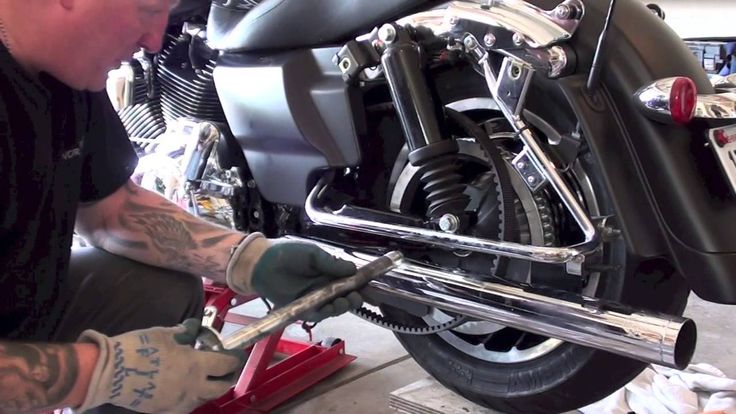 2 atmospheres less than the nominal value. Inflating too little is also bad: a flat tire has a larger contact patch with the road, so the place of a fresh patch will deform more.
2 atmospheres less than the nominal value. Inflating too little is also bad: a flat tire has a larger contact patch with the road, so the place of a fresh patch will deform more.
“Burning” a tubeless tube and sealing its internal cavity through a nipple are quick, simple methods that do not require special skills. To repair the damage, you only need the materials themselves, and how to pump up the wheel.
Now in Moscow, and not only, 6-5 varieties of cans with a sealant are sold - a quickly hardening "liquid rubber", with a volume of 800 to 250 ml.
Applying "Anti-Puncture" is simple: put a tube with a fitting on the nipple of the camera, turn the can over, and hold the button according to the instructions. Then - pump up the wheel, cleaning the nipple from the foam, roll it, making a full turn to distribute it.
The sealant is blown out with air into the puncture hole and clogs it, solidifying. After 20 minutes - you can go. Reliability of repair is high. Resource - until the next puncture.
After 20 minutes - you can go. Reliability of repair is high. Resource - until the next puncture.
If you have a compressor, start immediately pumping up the wheel, so it will be easier to work with a puncture, insert a patch, and it will swell faster.
Procedure:
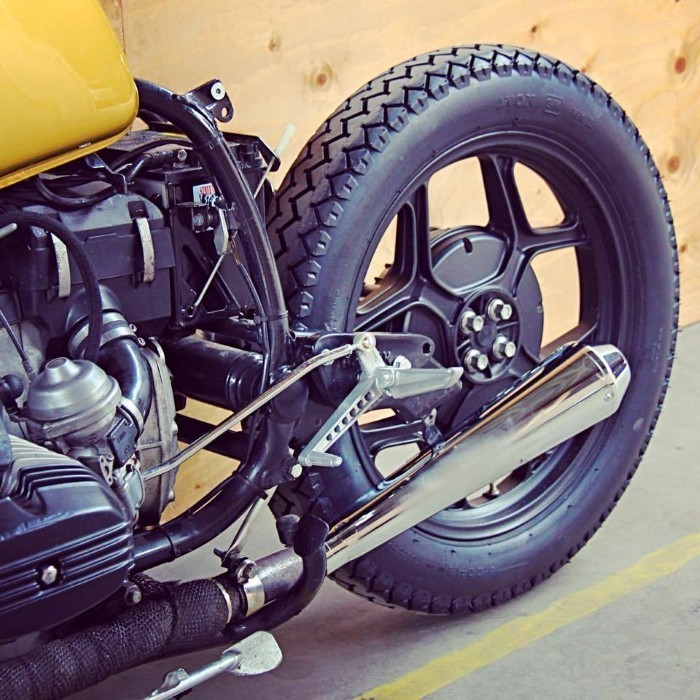
You can go in 5 minutes, you just need to make sure that it doesn’t descend anywhere else.
Outwardly identical, repair kits for harnessing wheels can differ in price by almost half. This variation is explained by different configurations - one will have only three items, the other - six or seven.
A complete tubeless tire repair kit contains:
Regardless of the cost, you need to choose a kit in which the harnesses will be reinforced, and the awl - with a deep spiral winding (notch), and not a “needle file”. Inserting a flagellum is sometimes easier with a regular thin screwdriver.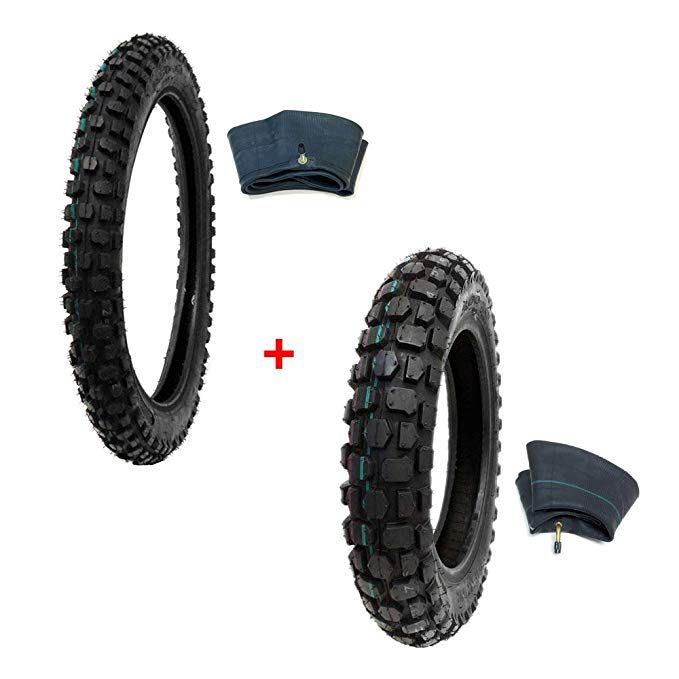 If there is no glue in the kit, or it has dried up, the flagellum is moistened with gasoline.
If there is no glue in the kit, or it has dried up, the flagellum is moistened with gasoline.
At motorcycle service stations and car services, holes in the chambers are closed by hot vulcanization: a layer of raw rubber is applied to the cleaned, fat-free puncture site and, after squeezing it well, it is heated with a special “iron”. Iron - burns, layers - are fused into a single whole. Reliability of repair is high. The resource will be almost like a new one.
Cold vulcanization (patching) - used if the workshop is not equipped with a vulcanizer. In this case, the quality of the service and the reliability of the repair will depend on the accuracy of the master. For the convenience of gluing, the camera is completely removed in the service, but, I repeat, this is not necessary. It can be repaired on the spot in the same way (there are no other options except for replacing the camera), but without removing it from the motorcycle.
This can only be done if you have two metal mounting blades. At least one, the second can be replaced with another flat tool. You can still disassemble the wheel with a wide screwdriver and a “family” key wrapped with electrical tape. But this is only as a last resort, otherwise you can damage the cord.
Sequence of work:
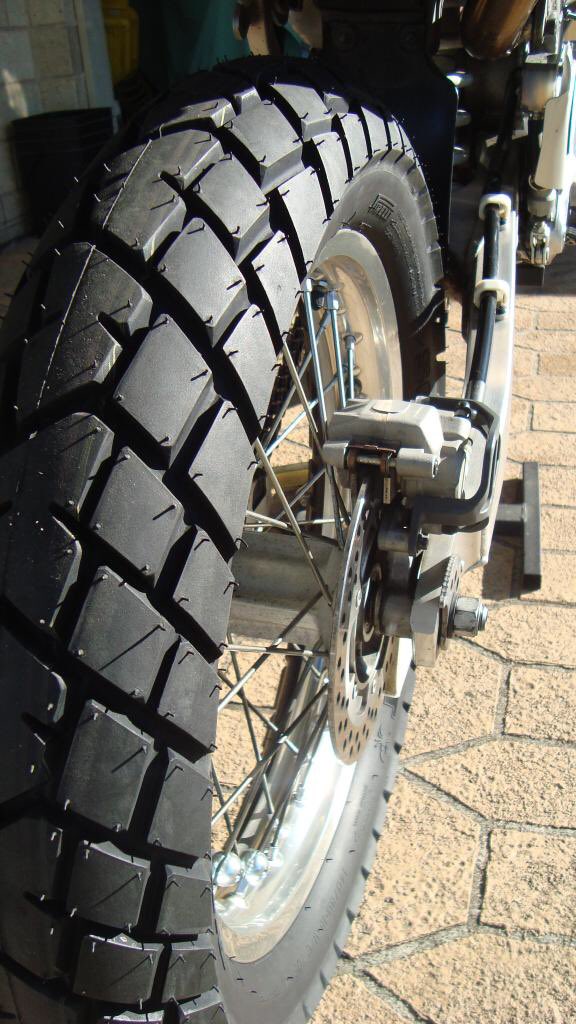 Let the glue dry for a minute.
Let the glue dry for a minute. The fencing must be carried out twice as carefully and more slowly than dismantling, lubricate the side with water or soap, “help” more with your hands, otherwise there is a risk of picking up the edge of the chamber with a spatula and tearing it.
Important! If the wheels of the motorcycle are equipped with tow bars - before pressing the tire bead from the rim, you need to loosen this tow bar! But do not unscrew the nut completely, do not disassemble to the end.
A standard “first aid kit” (a set for repairing classic motor rubber) contains only patches and glue, so it is advisable to supplement it yourself with a piece of “skin” or a needle file. You can degrease with gasoline, or apply a little glue first and wipe off immediately, rolling up the dust with it.
Now there is no shortage of specialized motorcycle workshops not only in Moscow - in all major cities there are motorcycle helpers who help motorcyclists directly on the track, or tow to where you can quickly change the camera, or patch the tubeless correctly, so that there is no trace left. Where there is a guarantee.
Self-replacement of a tire on a motorcycle requires a certain physical condition, and for the first time - a “kilometer of nerves”. At the service station, instead of you, automation will “sweat”, which will not lock up the board and will not scratch the disc coating with a spatula. The main thing is to do it quickly (if you need to go urgently, the price sometimes does not matter).
At the service station, instead of you, automation will “sweat”, which will not lock up the board and will not scratch the disc coating with a spatula. The main thing is to do it quickly (if you need to go urgently, the price sometimes does not matter).
Repair at the service - may be the only possible one if, due to driving on a flat tire, the tire nipple is turned and torn off. Especially if he flew off and got lost, but there is no spare. In mototiremontazhke - there is always a set of consumables for any wheel diameter. In the same place, in extreme cases, you can buy a new tire, or a used dokatka.
In addition to the patch, for normal operation of the wheel, balancing must be ensured. This is generally a useful procedure during any change of rubber, otherwise if there is a strong imbalance, the wheel bearing will inevitably break due to vibrations, and the hands will quickly get tired and “buzz” after long rides.
The first couple of tens of kilometers - do not drive, go at the speed of the stream.